I think it’s safe to say we’re living in a golden age of tabletop roleplaying games, and I’m sure that has all my diehard 80s and 90s action movie fans asking one very important question: can we please get a Lethal Weapon TTRPG? Perhaps a Diehard tabletop game? Or maybe even something a little more lighthearted, like a Last Action Hero pen-and-pencil game that lets you lean into the power fantasy but set in the era many of us grew up. Don't worry, I hear you.
This mystical game does exist, and it is called Outgunned.

Do you like car chases, bullets, and explosions? Now your ttrpg crew can play out scenes like that as if they were Micheal Bay or John McTiernan.
For anyone that wants a high-octane adventure full of brawls and bullets and death-defying car chases, a minimum of heavy rules, and plenty of danger, your prayers have been answered. This game system gets to all the good stuff, all the heart-pounding action you crave, without sacrificing satisfying characters and some fun dice rolling. How light are the rules, exactly? Are there still interesting decisions to be made? And for a game that lives on theme, how thematic is it when we get into the nitty gritty of the rules in motion? I’m glad you asked! Put that Mustang in gear and flip your safety off. We’re going in!
Killer Dice, Dude!
As the years carry on, and I play more tabletop roleplaying games, I’m continually struck by the old adage that form follows function. At least, it should. Because sure, a dedicated DM or GM can modify a system, add house rules to let a game do anything they want, but why I ask should someone have to go through all that effort? Shouldn’t a game system, by its function, provide rules and mechanics that dovetail into its mission? Therein lies the beauty of many TTRPGs today: they do exactly that.
In the case of Outgunned, what you want is a thematic system that lets you survive massive explosions, jumping from rooftops to the bad guys’ helicopter, ditching pursuers in exciting car chases, and taking on way more goons than the bullets in your clip should realistically allow... all the while dropping those cheesy one-liners that will have the rest of your game group simultaneously groaning and cheering as your GM actually rewards you for your thematic plays. And, awesomely, this is exactly what you get. In running my game for review, an adventure I put together myself (though the book does give you a starter adventure to run if you prefer), I was surprised by just how fast things moved! Mooks dropped like flies, bosses thematically engaged in epic final battles, and the players were always raring to tackle their next challenge, despite any bruises or scrapes they carried.

The artwork on the GM screen here shows you just what level of epic you're getting yourself into.
The dice system, it should come as no surprise then, is snappy and exciting. Players roll stat + skill as in many games, this time using all six-sided dice. In Outgunned, the number of pips added from stat and skill determine a total of dice rolled. You’re not looking for high numbers here but rather sets. Any number will do, generally speaking, as long as you roll pairs, 3 of a kind, 4 of a kind, or 5 of the same number. While this might seem daunting at first, players are also offered several ways to re-roll unwanted numbers, encouraging them to take chances and get those valuable successes during dangerous moments.
If players took relevant feats during character creation, related re-rolls will be free. Literally no reason not to show off when you’re good at something. You are heroes, after all! If you don’t have feats, no worries. You can still re-roll as long as you had at least one basic success (a pair) on your dice originally. If you get better total results, you keep them! If not, you lose a basic success as you fumble. Partial successes help, as well. Everything with the dice follows a “factor of 3” rule. Three basic successes (pairs) can convert into one critical success (3 of a kind), and three critical successes can convert into one extreme success (4 of a kind). So, if a roll calls for critical success and you only roll 2 pairs, say for a defense in combat, you can still take less damage as you do some damage control. Finally, friends can pass around their extra successes, so in the prior example if a buddy had rolled their own critical success plus one additional pair, they could kick that pair to you and give you a set of 3, upgrading them into the critical you needed as well.
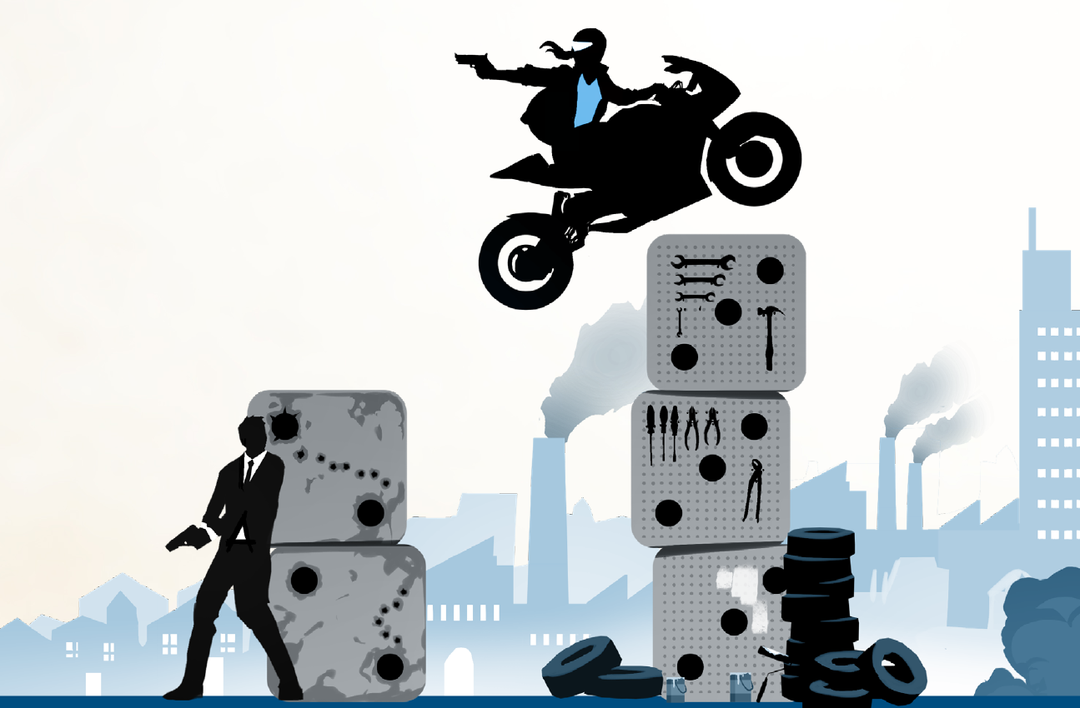
There's something really satisfying about chucking a fistful of dice. Doubly so when you can read their success in seconds.
There are a few more rules here and there that spice up the dice even more. For example, going “all in,” a maneuver that lets you re-roll a second time for a chance at even more success but trading all your previously rolled successes should you fail. These extra tidbits can seem a little fiddly at first when you, a new GM, are learning the system well enough to teach and play it, but trust me when I say that during play you might look through the book once or twice to refresh when you need and that’s it. Thematic as they are, and not overly cumbersome, the rules slot easily into the action and are just as easily remembered thereafter. With that said, I do want to take a chance to shout out two related and fantastic additions to the system mechanics: adrenaline and spotlights.
Adrenaline is typically rewarded for big, incredible happenings such as in moments of great emotion or sacrifice, when rolling way better than you need for a task, or if your grit (damage) track passes certain thresholds, to name a few. It can be spent for extra dice when you need them or to activate certain feats and abilities. Easy to earn and easy to spend, giving you a boost as its name would suggest. Save enough of it, though, and you can also cash it in for a spotlight, a rare and special resource that is only otherwise awarded by the GM for especially thematic actions taken by players in clutch moments. Spotlights are far more powerful, allowing a player to gain an automatic extreme success on a roll, take control of a narrative short term, or even save a friend from death. Once spent, there’s also a coin flip to potentially keep that spotlight (or passing it to a friend if you saved them from death). As a GM who is really only concerned with a good story I share in telling with my players, the idea that they have a potentially cascading “win more” resource honestly sits perfectly fine with me. I love the idea that they can turn scenes into true action hero moments or otherwise turn victory back from the jaws of defeat. It’s everything you want from a system like this, and honestly it’s also just a great excuse for me to ratchet up the action even harder!

An example of what you get in your build if you play The Ace.
Strong Character
The action in Outgunned is fast-paced and fun, for sure. In practice what I’ve noticed is that we as a group spend less time focused on debating actions and more on doing stuff and watching the outcomes. And that means the camera always seemed to be pointed at the heroes, the player characters. So, let’s talk about character creation!
Outgunned might have the most thematic, fun, and quick character creation I’ve seen in a modern TTRPG to date. My players loved it, one even commenting that for all the fine-tuned control a player gives up in making a character for this system, he was shocked just how close to his concept his final character came out. What I mean by this is that you don’t drop points meticulously into everything like you do in other systems. There’s no debating back and forth, agonizing over single stat points and builds here. Instead, you take a role, an archetype for the base of your character, and this determines your choice of starting attribute point bonuses and some included skills, all of which get a pip for your future dice pools. You might be a crafty spy or a burly brawler. You might be an ex-military person of action or just some normal dude who’s been roped into something way over his head.
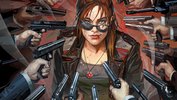 Outgunned
Outgunned
Publisher: Free League Publishing
Format: Tabletop RPG
Price: 538 kr (roughly $56 USD)
Copy Provided By Publisher
After you pick your starting point, you tailor your character further by picking tropes. These further describe your character, be they “The Last Boy Scout,” a “Neurotic Geek,” or a “Jerk with a Heart of Gold.” Each gives you another attribute point and more included skills to add pips to. You pick a character age, giving you a few more bonuses or drawbacks, but essentially at each step of the way you’re making thematic choices about the direction of your overall character. The game does all the heavy lifting for you. As a GM playing this system for the first time with a group of newly taught players, this was a godsend. Being able to tell people not to worry about stats or builds and just go with the image of the character in their head made things so easy to get into and get started! Giving credit where credit is due, the system delivered ready-to-play characters right in line with what my players wanted.

Roles also come with their associated inspirations, at least some of which I'm sure your players will know.
Lights, Camera, And All The Action
As I’ve been reminded quite a bit lately, while I tend to have a pretty good grasp on a game simply by reading its rules, putting it all in motion during actual play is another experience altogether. Outgunned absolutely comes alive when you set it loose, the culmination of all its little bits like tiny cogs set in motion. While a single failure on, say, a roll to shoot your gun might result in being out of bullets (hope you have some spare ammo), larger conflicts all share a fantastic similarity that I cannot get enough of.
Are you, weary GM, tired of tracking the individual health pools of a group of mooks? Do you wish you could just fudge the numbers in favor of fast, thematic combat, and throw all your spreadsheets in the trash? Then worry no longer! Enemies in Outgunned all work on a shared health pool system. In any given round of combat, players will narrate their actions and roll their dice, narrating how they’d like to take their turns. Enemies have a success level needed to beat in order to hurt them, with players using any relevant skills they wish to roll for attacks, and each success ticks off a certain number of enemy grit (health) boxes. Enemies also have a defense number, rolled against by players when the mooks hit back. Players once again select any skill they think is relevant in defending themselves, from ducking enemy gunfire to swerving an entire vehicle to be harder to hit. And if you think that a single health track for mooks might still be too drab, don’t worry. There are enemy feats you can give them to make them a little extra unique and spicy!
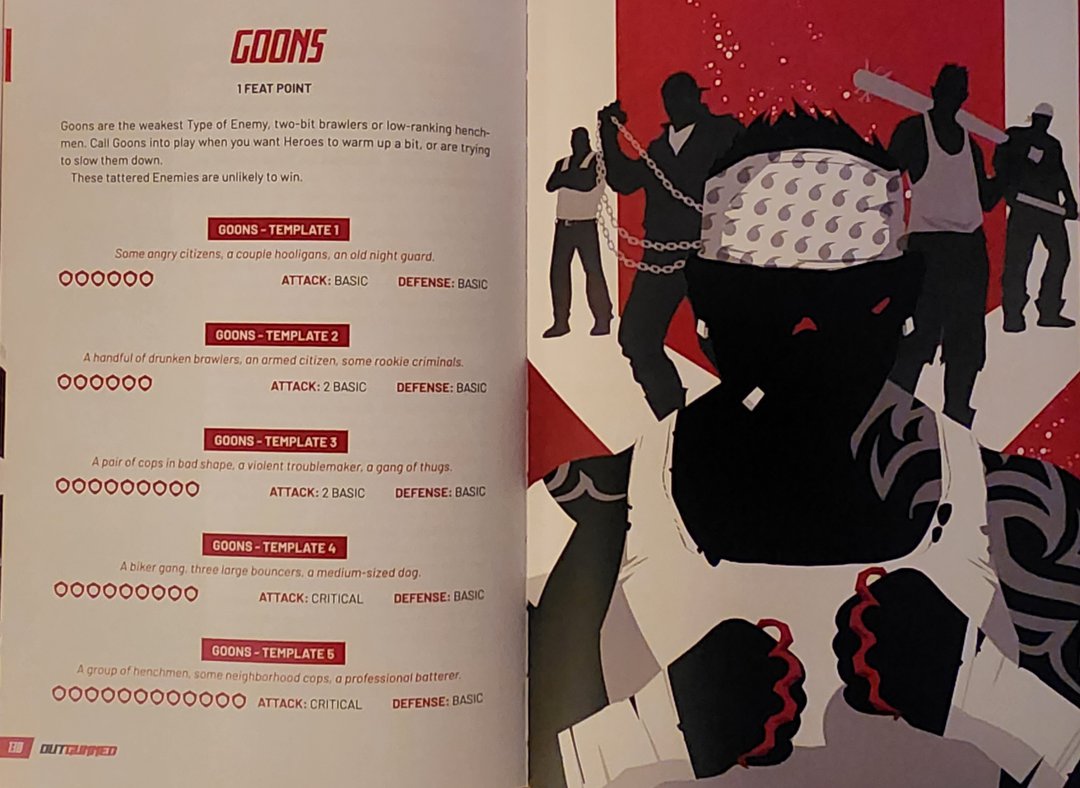
A peek at some basic baddies. Trust me, they come in all varieties and are simple enough to invent as many more as you need!
What I love about this is that the GM doesn’t have to be precious about any particular mooks. If player rolls are good enough, I found that the best thing to do was just make the “action movie” playing out as fun to watch as possible. An early brawl in a diner, pitting my players against a gang of punks, saw one baddie getting roundhouse kicked over the breakfast bar while another got a hot pot of coffee cracked over his head. Every roll was an opportunity to have the scene play out in spectacular fashion, and when all the enemy grit boxes were ticked, and all the mooks were unconscious on the ground, the players were able to get their breakfast orders moved “to go” and left a nice tip for the staff on the way out. Along with a classic casual apology for the mess as they strode out, of course.
Car chases, while you’d expect them to perhaps run on different or more complex rules, are equally as easy. I couldn’t leave out a car chase when playing for review, now could I? We had to test it, for science! Plus one of my players decided to start our game with a ride of his own and it would have been a waste for me not to try and punch the windows out with gunfire or run him off the road with a few enemy SUVs. Chases follow much the same format as combat with the twist being that player success or failure adds and detracts from a “speed” meter, an amount by which a separate progress track will fill after each complete round. Speed is 3? Your progress track fills by 3 after the next round. Simple! Each round players use their skills to rack up successes, helping raise their vehicle’s relative speed to their enemies, avoiding failures that will keep their enemies in pursuit. Fill the progress track completely and the players get away clean. Fail to fill the track within a set number of rounds, wreck your ride, or fail to keep the vehicle above a certain speed at all times (an optional rule that is a bunch of fun) and the chase is a failure. Your heroes might have to fight their way out after all, though they’re never down and out completely.
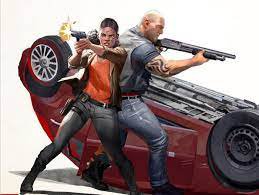
A failed car chase is just another opportunity for fun! But try not to wreck it, please. I just made my last payment.
Thinking Like An Action Hero
Imagine, if you will, my players casing out a casino that they know is connected to the Big Bad. They don’t know where he is yet, but this casino has the answers. They just need to get in the back and snoop around, and so they roll in looking to schmooze their way past some of the table games and the bartender working in the lounge. They spend far too long trying to come up with a plan, and when that plan fails, one botched dice roll after another, they are stuck. The players sit around the table, unsure where to go next. Then it all clicks.
Everyone’s been trying to play Outgunned to this point like any other TTRPG. Careful planning, minimizing the effects of failed rolls, trying not to raise too much alarm in an area full of security suits. They weren’t thinking like action movie heroes. As soon as they shifted their thinking, though, they suddenly realized all the doors that were still open to them. Knock a guard out in the bathroom and take his clothes? Valid. Wait for no one to be watching and then simply slip through a door into the back rooms? Totally! Get thrown out on your behind for bad behavior in the casino and decide to take a walk around back, slipping in the loading docks with some of the deliveries? 100% what one of my players did.
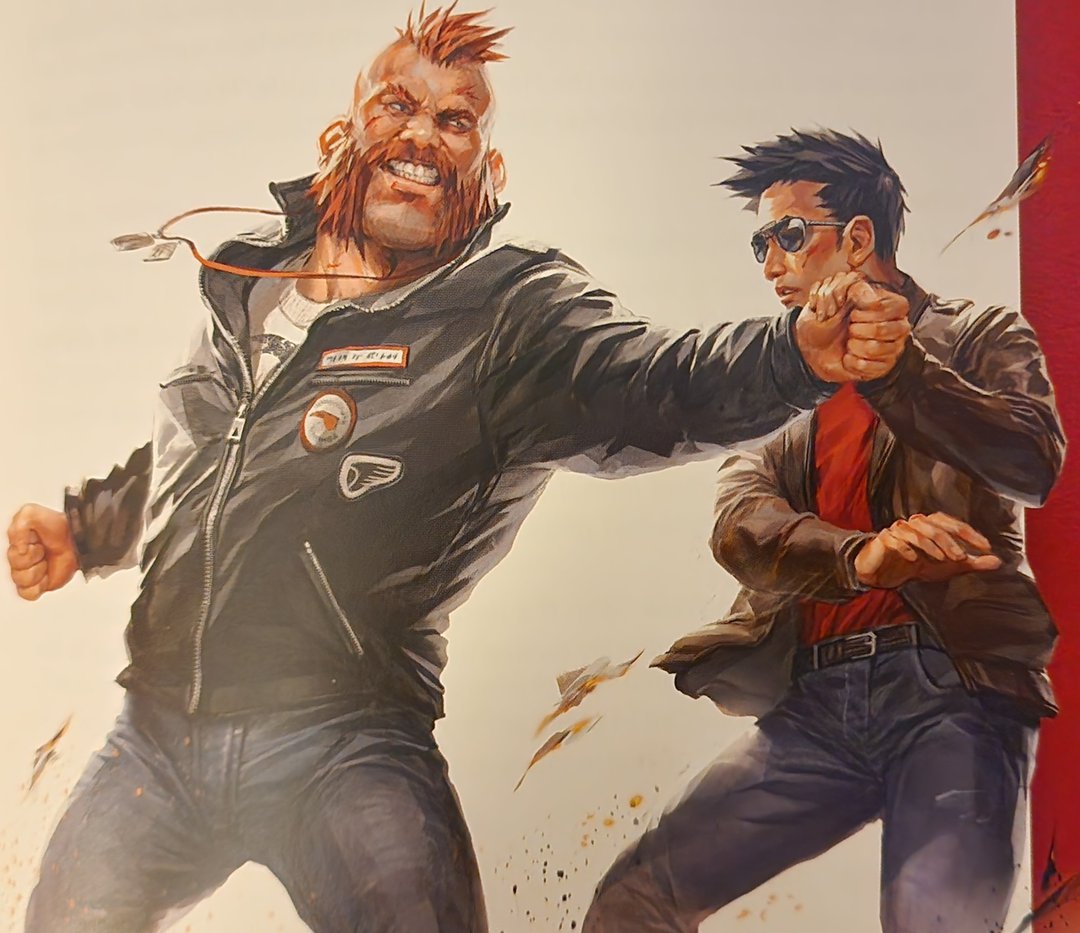
Nothing like the time-honored solution of "apply fists to face."
The more we played together, the more my players (and I as a GM) realized that this game is best when you play it like an action flick. Don’t overthink it. You’re a hero, so act like one! Sometimes you keep your head down. Sometimes you go loud. Sometimes you mix in a little of both. Someone sees you going through that door to restricted areas? Just punch them out before they can raise an alarm! By the time the baddies realize what you’ve done, you’ll already be in the parking garage flipping your car into reverse and peeling out onto the pavement just ahead of your pursuers.
The game is also very clear about “failing forward.” A botched roll doesn’t necessarily mean you can’t do the thing that needs to be done. There might just be consequences. You might make more noise than you expect. You might lose an item from your inventory in the rush. But as we love to see in the movies, a little struggle builds character. Things might look worse for wear on our heroes, but with some determination, guts, and some cheesy 1-liners, they’ll pull through yet!
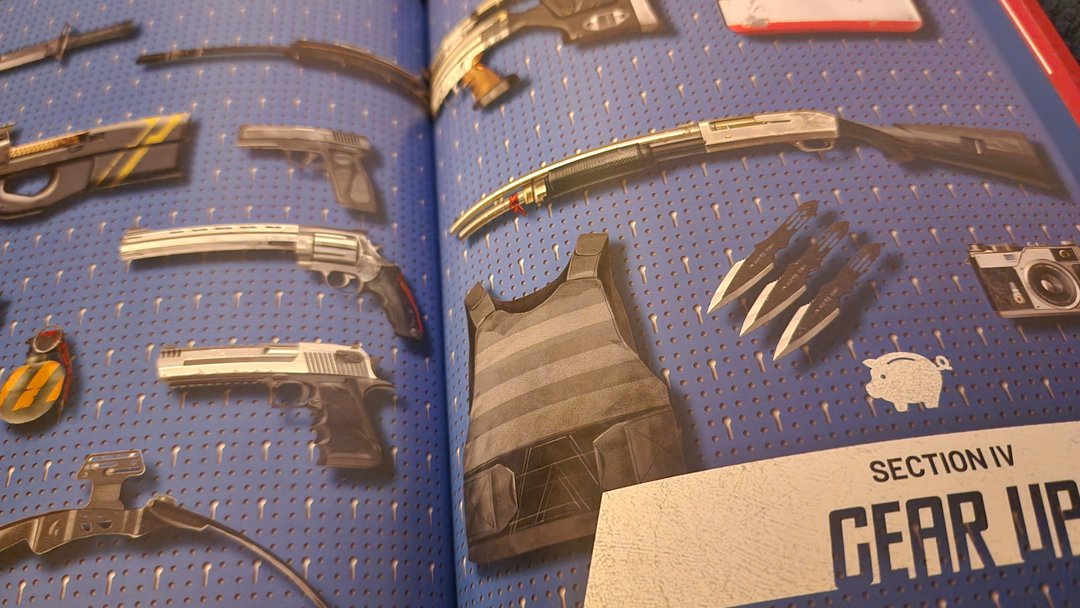
Do you like stuff? You get to pick from lots of cool stuff, though never so much at once to be overwhelmed. Each piece counts!
One Adventure Ends, Another Begins
I think my favorite part of Outgunned is how easy it is to get into the action. As a GM, I do love to plan things out to some degree. I enjoy taking my time writing a good story, setting down challenges for my players. But to some degree I also don’t like spending forever planning sessions. I’m a busy guy with a lot going on, and I don’t always want to commit to sitting down for hours each week to make sure the next session is prepped. Outgunned respects my time and offers me a maximum of entertainment for a minimum of overhead.
Let’s be honest here: for a game all about being an action movie hero, action is what you came here for, isn’t it? Downtime gives our players a chance to catch their breath. Their characters can heal and plan their next steps, but we’re all eagerly awaiting the next car chase, the next impossible gun battle, taking that construction vehicle and driving it through the front of the bad guy’s mansion. Streamlined and refined, Outgunned gives you everything you want and nothing you don’t, all wrapped up in just one book. And if that’s still not enough for you, the system has a bunch of supplements if you want them. Turn the game into an Indiana Jones adventure. Or one in space, if you prefer. Or pirates! They’re not in this review’s scope, but if you’ve liked the sound of this review and wished the theme were just slightly different, you should know they exist.
I picked this up this copy at last year's PAX, looking for a very specific sort of theme, and wasn't disappointed. The next time you are at a gaming convention (like PAX Unplugged in the next few weeks), take some time to go through the selection of publishers like this that now specialize in creating ttrpgs that fits a very particular mood. In this case, if you want laughter-filled one-shots or an extended campaign of heart-pounding action, I'm sure you'll find what you're looking for in Outgunned.